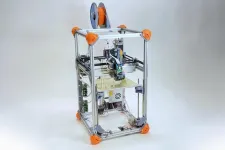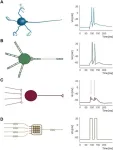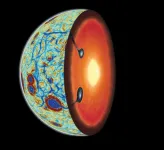(Press-News.org) SAN DIEGO – Saruparib, a selective inhibitor of poly-ADP ribose polymerase 1 (PARP1), demonstrated a promising objective response rate and progression-free survival in patients with certain homologous recombination repair (HRR)-deficient breast cancers, according to results from the phase I/II PETRA trial presented at the American Association for Cancer Research (AACR) Annual Meeting 2024, held April 5-10.
Although blocking the enzyme PARP1 may be sufficient to prevent DNA repair in HRR-deficient tumors, all PARP inhibitors currently approved by the U.S. Food and Drug Administration (FDA) block both PARP1 and PARP2, which can limit utility because of toxicity, explained Timothy A. Yap, MBBS, PhD, professor of Investigational Cancer Therapeutics and vice president and head of clinical development in the Therapeutics Discovery Division at The University of Texas MD Anderson Cancer Center, who presented the study.
“When we were developing first-generation PARP inhibitors, we weren’t able to increase the doses above a certain threshold because of toxicity,” Yap said. “By designing selective PARP1 inhibitors, we have a great opportunity to improve safety, tolerability, pharmacokinetics, pharmacodynamics, efficacy, and combinability with other therapies.”
Saruparib, a PARP1-specific inhibitor, showed promising tumor growth inhibition in preclinical models of breast, ovarian, pancreatic, and prostate cancer harboring HRR deficiency mutations. Because saruparib was less toxic than other PARP inhibitors, it could be given at higher doses.
“The properties of saruparib enable patients to reach high drug pharmacokinetic exposure levels and pharmacodynamic target engagement,” Yap said. “This means that patients may be able to stay on the optimal dose for a longer duration due to fewer dose interruptions and reductions, which may ultimately improve efficacy.”
PETRA is a multicenter phase I/II clinical trial evaluating the safety, tolerability, and efficacy of saruparib in 306 patients with previously treated (including ≤1 prior PARP inhibitor in the dose escalation phase and PARP inhibitor-naive breast cancer patients in the dose expansion phase) HRR-deficient breast, ovarian, pancreatic, or prostate cancer. Patients had tumors with mutations in one of five HRR genes: BRCA1, BRCA2, PALB2, RAD51C, or RAD51D.
Patients were treated at doses ranging from 10 to 140 mg saruparib daily; 60 mg daily was chosen as the recommended dose for further clinical development. Among the 31 breast cancer patients treated with 60 mg saruparib, the objective response rate was 48.4%, the median duration of response was 7.3 months, and the median progression-free survival was 9.1 months.
In the cohort of 141 patients who received the 60 mg dose across all cancer types, adverse events were observed in 92.2% of patients and 12.1% of patients experienced a serious adverse event. Adverse events related to saruparib were observed in 76.6% of patients, and 2.1% of patients had a serious adverse event related to the drug; 3.5% of patients discontinued treatment due to adverse events related to saruparib.
Yap noted that the adverse events profile from this phase I/II trial of heavily pretreated patients compared favorably to those from phase III trials testing other PARP inhibitors in treatment-naïve patients. “The low rate of dose reductions observed with saruparib suggests a very manageable safety profile that we believe will enable patients to stay longer at the optimal dose and therefore maximize the opportunity for long-term benefit,” Yap said.
Pharmacokinetic analyses showed that, at all dose levels, patients maintained higher blood concentrations of saruparib than typically observed with other PARP inhibitors. At the molecular level, saruparib inhibited around 90% of PARP activity in tumor tissue collected from biopsies.
“The excellent safety and tolerability profile, along with the favorable pharmacokinetic and pharmacodynamic properties, may enable patients to remain on saruparib treatment with sustained maximal target engagement and limited dose reductions or discontinuation,” Yap said.
Limitations of this study include its single-arm design and small sample size.
This study was funded by AstraZeneca. Yap is head of clinical development in the Therapeutics Discovery Division at The University of Texas MD Anderson Cancer Center, which has licensed therapeutics to Artios Pharma. He serves or has served as a consultant for 858 Therapeutics, Inc., AbbVie, Acrivon Therapeutics, Adagene, Aduro Biotech, Inc., Almac, Amgen, Amphista Therapeutics, Artios Pharma, Astex Pharmaceuticals, AstraZeneca, Athena Therapeutics, Atrin Pharmaceuticals, Avenzo Therapeutics, Avoro Capital Advisors, Axiom Real-Time Metrics, Baptist Health System, Bayer, BeiGene, BioCity Biopharma, Blueprint Medicines, Boxer Capital, BridGene Biosciences, Bristol Myers Squibb, C4 Therapeutics, Inc., Calithera Biosciences, Cancer Research UK, Carrick Therapeutics, Circle Pharma, Inc., Clovis Oncology, Cybrexa Therapeutics, Daiichi Sankyo, Dark Blue Therapeutics Ltd., Debiopharm, Diffusion Pharmaceuticals, Duke Street Bio Ltd., EcoR1 Capital Fund, Ellipses Pharma, EMD Serono, Inc., Entos Pharmaceuticals, FoRx Therapeutics AG, F-star Therapeutics, Genesis Therapeutics, Genmab, Glenmark Pharmaceuticals, GLG Pharma, Globe Life Sciences, Grey Wolf Therapeutics, GSK, Guidepoint, IDEAYA Biosciences, Idience, Ignyta, Inc., I-Mab, ImmuneSensor Therapeutics, Inc., IMPACT Therapeutics, Institut Gustave Roussy, Intellisphere LLC, Janssen, Joint Scientific Committee for Phase I Clinical Trials (Hong Kong), Kyn Therapeutics, Kyowa Kirin, MEI pharma, Mereo BioPharma Group plc, Merck, Merit, Monte Rosa Therapeutics, Natera, Nested Therapeutics, Nexys Therapeutics, Inc., Nimbus Therapeutics, LLC, Novocure, Odyssey Therapeutics, Oregon Health & Science University, OncoSec, Ono Pharmaceutical Co. Ltd., Onxeo, PanAngium Therapeutics, PEGASCY-Group, PER, Pfizer, Piper Sandler Companies, Pliant Therapeutics, Prelude Therapeutics, ProLynx Inc., Protai Bio, Ltd., Radiopharm Theranostics, Repare Therapeutics, resTORbio, Inc., Roche, Ryvu Therapeutics SA, Sanofi, Schrödinger, Inc., Servier Pharmaceuticals, the Swiss Group for Clinical Cancer Research, Synnovation Therapeutics, Synthis Therapeutics, Inc., Tango Biosciences, Inc., TCG Crossover, Terns Pharmaceuticals, Terremoto Biosciences, Tessellate BIO, Theragnostics, Thryv Therapeutics Inc., TOLREMO therapeutics, AG, Tome Biosciences, Translational Drug Development (TD2), Trevarx Biomedical, Varian, Veeva Systems, Versant Ventures, Vibliome Therapeutics, LLC, Voronoi Inc., XinThera Inc., Zai Lab, and ZielBio; receives or has received research support from Artios Pharma, AstraZeneca, Bayer, BeiGene, BioNTech, Blueprint Medicines, Bristol Myers Squibb, Boundless Bio, the Cancer Prevention and Research Institute of Texas, Clovis Oncology, Constellation Pharmaceuticals, Cyteir Therapeutics, Eli Lilly and Company, EMD Serono, Exelixis, Forbius, F-star Therapeutics, GSK, Genentech, Gilead Sciences, Golfers Against Cancer, Haihe Biopharma, IDEAYA Biosciences, ImmuneSensor Therapeutics, Inc., Insilico Medicine, Ionis Pharmaceuticals, Ipsen, Jounce Therapeutics, Inc., Karyopharm Therapeutics, KSQ Therapeutics, Inc., Kyowa Kirin, Merck, Mirati Therapeutics, the National Cancer Institute of the National Institutes of Health, Novartis, Pfizer, Pliant Therapeutics, Prelude Therapeutics, Regeneron Pharmaceuticals, Repare Therapeutics, Ribon Therapeutics, Inc., Roche, Rubius Therapeutics, Sanofi, Scholar Rock, Seagen, Synnovation Therapeutics, Inc., Tango Biosciences Inc., Tesaro, the U.S. Department of Defense, V Foundation for Cancer Research, Vivace Therapeutics, Zenith Epigenetics, and Zentalis Pharmaceuticals; and holds stock in Seagen.
END
Next-generation PARP inhibitor demonstrates clinical benefit in patients with homologous recombination repair-deficient breast cancer
Drug has higher selectivity for PARP1, improving safety and tolerability
2024-04-08
ELSE PRESS RELEASES FROM THIS DATE:
An exosome-based liquid biopsy shows promise for early detection of pancreatic cancer
2024-04-08
SAN DIEGO – An investigational exosome-based liquid biopsy accurately detected 97% of stage 1-2 pancreatic cancers when combined with the biomarker CA 19-9, according to research presented at the American Association for Cancer Research (AACR) Annual Meeting 2024, held April 5-10.
“Pancreatic cancer is one of the most fatal malignancies, in large part because the majority of patients are diagnosed only after the cancer has already metastasized,” said Ajay Goel, PhD, senior author of the study and the chair of the Department of Molecular ...
Proof-of-principle demonstration of 3-D magnetic recording
2024-04-08
1. Research groups from NIMS, Seagate Technology, and Tohoku University have made a breakthrough in the field of hard disk drives (HDD) by demonstrating the feasibility of multi-level recording using a three-dimensional magnetic recording medium to store digital information. The research groups have shown that this technology can be used to increase the storage capacity of HDDs, which could lead to more efficient and cost-effective data storage solutions in the future.
2. Data centers are increasingly storing vast amounts of data on hard disk drives (HDDs) that use perpendicular ...
This 3D printer can figure out how to print with an unknown material
2024-04-08
While 3D printing has exploded in popularity, many of the plastic materials these printers use to create objects cannot be easily recycled. While new sustainable materials are emerging for use in 3D printing, they remain difficult to adopt because 3D printer settings need to be adjusted for each material, a process generally done by hand.
To print a new material from scratch, one must typically set up to 100 parameters in software that controls how the printer will extrude the material as it fabricates an object. Commonly ...
Brain-inspired computing may boil down to information transfer
2024-04-08
The biological brain, especially the human brain, is a desirable computing system that consumes little energy and runs at high efficiency. To build a computing system just as good, many neuromorphic scientists focus on designing hardware components intended to mimic the elusive learning mechanism of the brain. Recently, a research team has approached the goal from a different angle, focusing on measuring information transfer instead. Their method went through biological and simulation experiments and then proved effective in an electronic neuromorphic system. It was published ...
Youths with mood disorders 30 percent less likely to acquire driver’s license than peers
2024-04-08
Philadelphia, April 8, 2024 – Researchers from Children’s Hospital of Philadelphia (CHOP) found that teens and young adults with mood disorders, such as depression and bipolar disorder, were 30% less likely to obtain their driver’s license than peers without such disorders. Additionally, those youths with mood disorders experienced a slightly elevated risk of crashing. These findings suggest that these teens and young adults could benefit from guidance on obtaining licensure and accessing training to avoid crashes when they are newly licensed.
The findings were published online today ...
Opening a new front against pancreatic cancer
2024-04-08
NEW YORK, NY (April 8, 2024)--A new type of investigational therapeutic in development for pancreatic cancer has shown unprecedented tumor-fighting abilities in preclinical models of the disease, suggesting it has the potential to offer novel treatment options for nearly all pancreatic tumors, a comprehensive study has found.
The inhibitors in this new class of oral medications, being developed by Revolution Medicines Inc., target the oncogenic or active cancer-causing form of RAS proteins (such as KRAS, NRAS, and HRAS). These RAS “oncoproteins” drive up to a third of all human cancers. The research ...
More premature babies born following Swedish parental leave policy
2024-04-08
The introduction of a policy protecting parental leave benefits in Sweden in 1980 had unintended consequences on child health. The policy led to an increase in premature birth rates. This is shown by a study from researchers at Stockholm University, published in JAMA Pediatrics.
The Swedish so-called speed premium policy was introduced in 1980 in order to protect couples’ level of income-based parental leave benefits when they had children in quick succession. The new study from Stockholm University evaluates the health consequences of the policy. The researchers conclude that by ...
Immune key to chronic viral infections discovered
2024-04-08
IMMUNE KEY TO CHRONIC VIRAL INFECTIONS DISCOVERED
Australian researchers have discovered a previously unknown rogue immune cell that can cause poor antibody responses in chronic viral infections. The finding, published today (9 April) in the journal, Immunity, may lead to earlier intervention and possibly prevention of some types of viral infections such as HIV or hepatitis.
One of the remaining mysteries of the human immune system is why a certain cell, called a B cell, which retains a memory for past infections – ensuring we fight off diseases we have experienced before – often only has a weak capacity to protect us from persistent infections.
Researchers ...
PFAS ‘forever chemicals’ above drinking water guidelines in global source water
2024-04-08
Per-and poly-fluoroalkyl substances – commonly known as PFAS – are a group of over 14,000 human-made chemicals that have been popular since the 1950s for their diverse skills in resisting heat, water, grease and stains.
They’ve been commonly found in household products like non-stick frypans, clothing, cosmetics, insecticides, and food packaging, as well as specialty industry products, like firefighting foam.
But despite their broad skillset, the chemicals have a dark side: they’re known as ‘forever chemicals’ as once they’re in the environment – ...
How the moon turned itself inside out
2024-04-08
About 4.5 billion years ago, a small planet smashed into the young Earth, flinging molten rock into space. Slowly, the debris coalesced, cooled and solidified, forming our moon. This scenario of how the Earth's moon came to be is the one largely agreed upon by most scientists. But the details of how exactly that happened are "more of a choose-your-own adventure novel," according to researchers in the University of Arizona Lunar and Planetary Laboratory who published a paper in Nature Geoscience. The findings offer important insights into the evolution ...
LAST 30 PRESS RELEASES:
Study: Teens use cellphones for an hour a day at school
After more than two years of war, Palestinian children are hungry, denied education and “like the living dead”
The untold story of life with Prader-Willi syndrome - according to the siblings who live it
How the parasite that ‘gave up sex’ found more hosts – and why its victory won’t last
When is it time to jump? The boiling frog problem of AI use in physics education
Twitter data reveals partisan divide in understanding why pollen season's getting worse
AI is quick but risky for updating old software
Revolutionizing biosecurity: new multi-omics framework to transform invasive species management
From ancient herb to modern medicine: new review unveils the multi-targeted healing potential of Borago officinalis
Building a global scientific community: Biological Diversity Journal announces dual recruitment of Editorial Board and Youth Editorial Board members
Microbes that break down antibiotics help protect ecosystems under drug pollution
Smart biochar that remembers pollutants offers a new way to clean water and recycle biomass
Rice genes matter more than domestication in shaping plant microbiomes
Ticking time bomb: Some farmers report as many as 70 tick encounters over a 6-month period
Turning garden and crop waste into plastics
Scientists discover ‘platypus galaxies’ in the early universe
Seeing thyroid cancer in a new light: when AI meets label-free imaging in the operating room
Neutrophil-to-lymphocyte ratio may aid risk stratification in depressive disorder
2026 Seismological Society of America Annual Meeting
AI-powered ECG analysis offers promising path for early detection of chronic obstructive pulmonary disease, says Mount Sinai researchers
GIMM uncovers flaws in lab-grown heart cells and paves the way for improved treatments
Cracking the evolutionary code of sleep
Medications could help the aging brain cope with surgery, memory impairment
Back pain linked to worse sleep years later in men over 65, according to study
CDC urges ‘shared decision-making’ on some childhood vaccines; many unclear about what that means
New research finds that an ‘equal treatment’ approach to economic opportunity advertising can backfire
Researchers create shape-shifting, self-navigating microparticles
Science army mobilizes to map US soil microbiome
Researchers develop new tools to turn grain crops into biosensors
Do supervised consumption sites bring increased crime? Study suggests that’s a myth
[Press-News.org] Next-generation PARP inhibitor demonstrates clinical benefit in patients with homologous recombination repair-deficient breast cancerDrug has higher selectivity for PARP1, improving safety and tolerability



